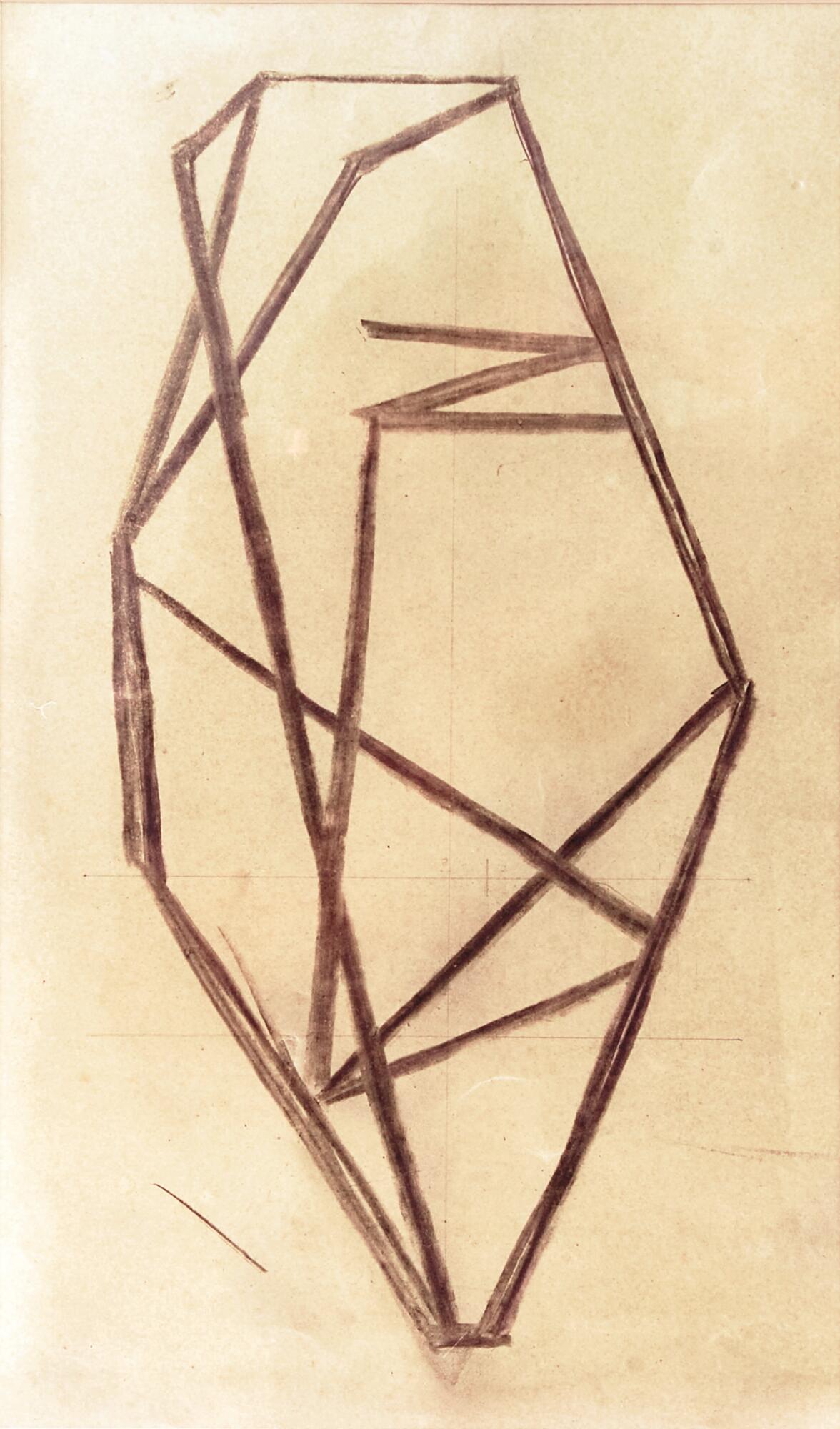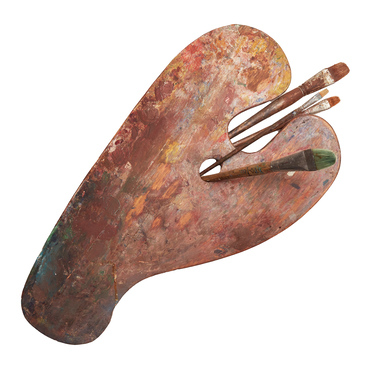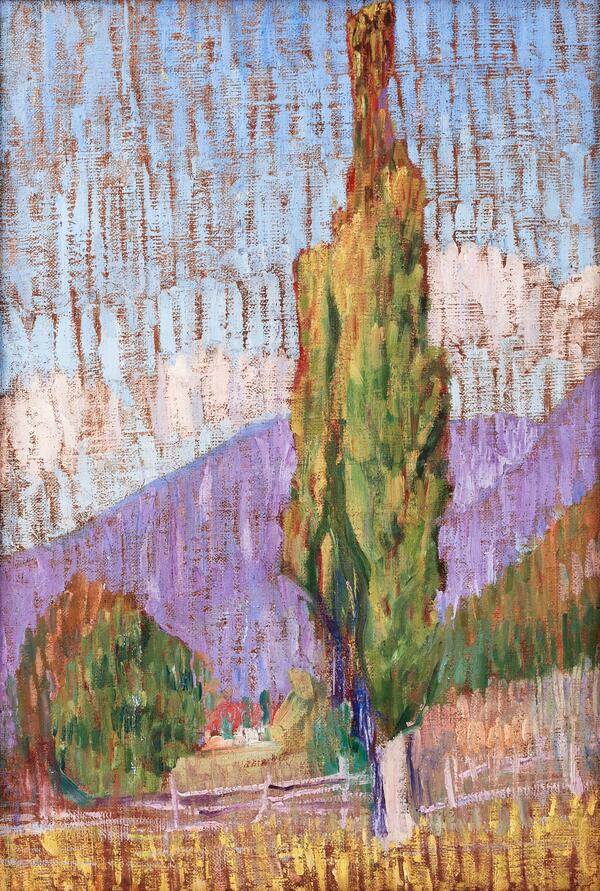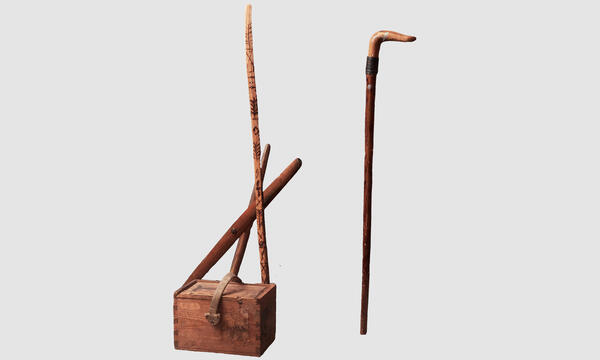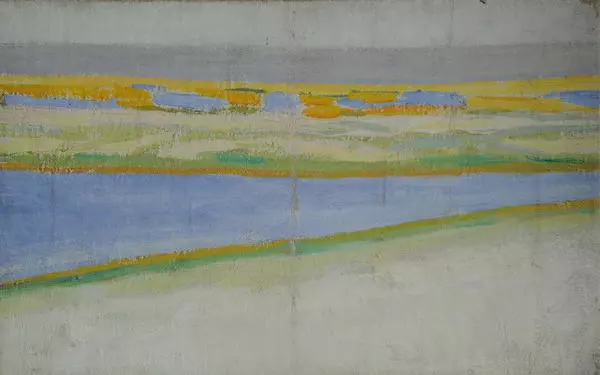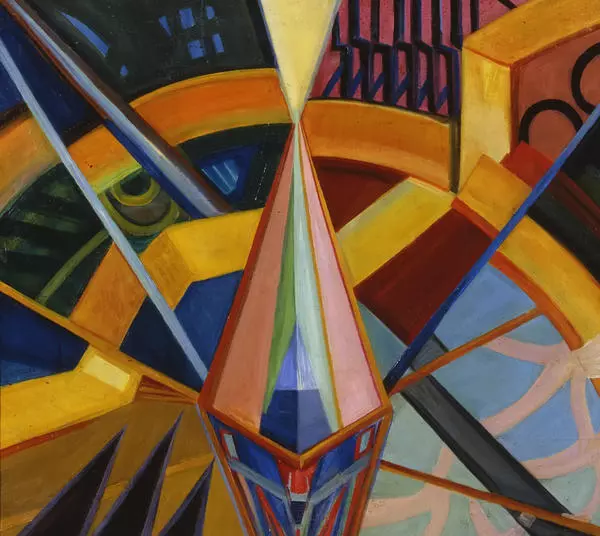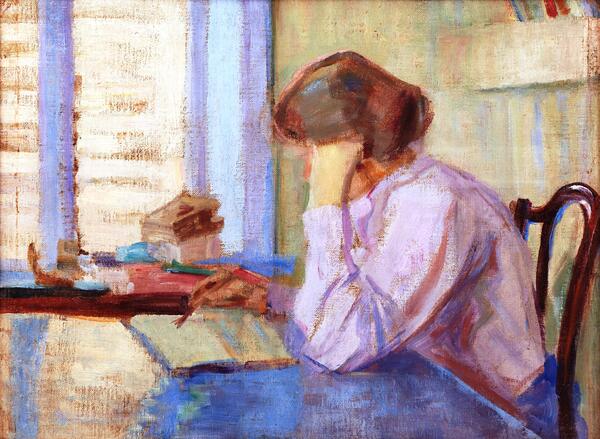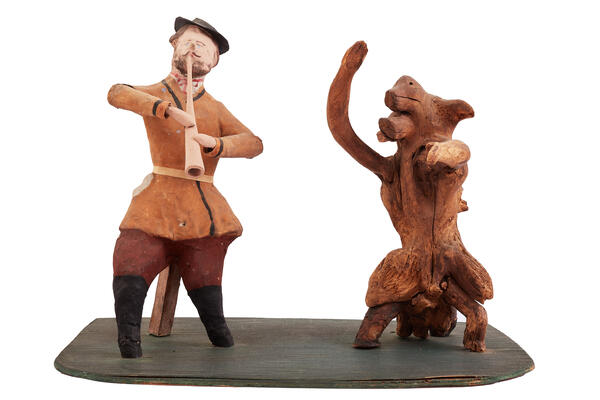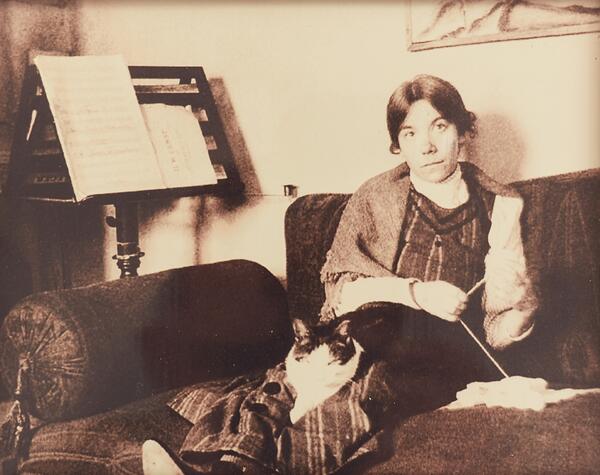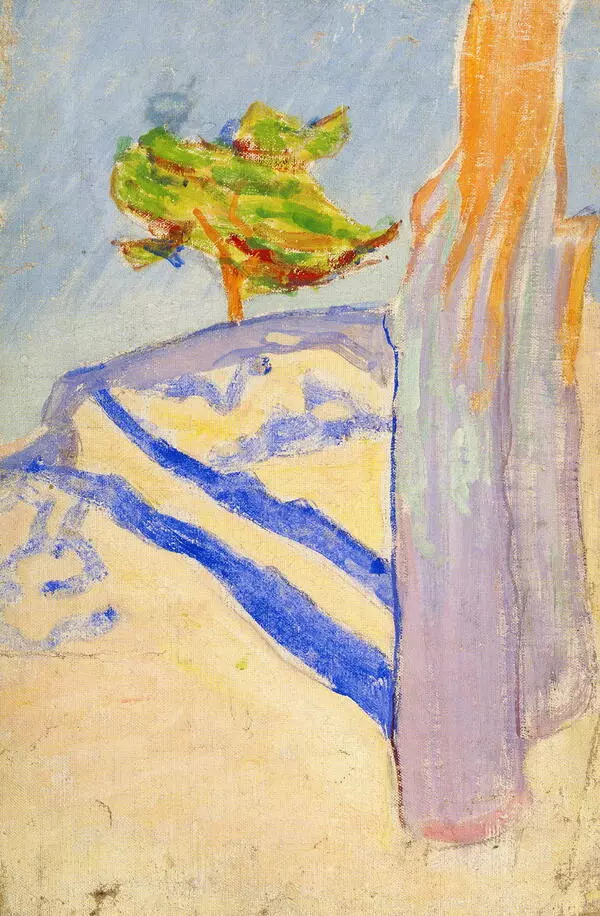Between the mid-1910s and the early 1920s, Mikhail Vasilyevich Matyushin created a number of abstract compositions. Some of them depicted or resembled crystals. In his autobiography, Matyushin associated this change in his style with the study of Cubism, the formation of his own principles of the perception of space, and the search for means of expressing an all-encompassing (in both space and time) view of the object.
Just as in the early 1910s he was fascinated by the form of roots, which embodied the process of growth and development of a plant, he now turned to crystals, a symmetrical natural form that also reflected the growth and development of the matter. The crystal in the portrait has an iridescent surface, while the sketch from the museum’s collection shows only a frame, a composition of intersecting lines, which remotely resembles the artist’s facial features.
In this work, the logic of Euclidean geometry is disrupted, and the edges and sides of the crystal seem to be displaced. Such a shift in the composition hints at the presence of the fourth dimension and is characteristic of any avant-garde artist who has tried using the principles of Cubism.
Mikhail Matyushin recalled his work on the “Crystal” self-portrait,